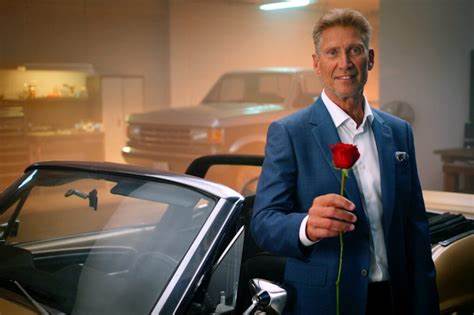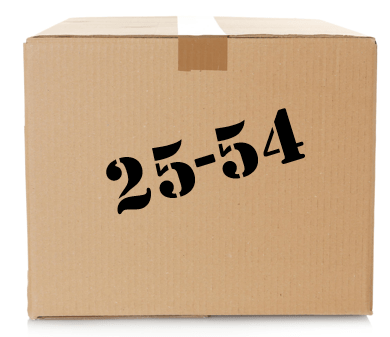
“Thelma & Louise” | Screen cap via YouTube
When you’ve signed on as many radio stations as I have, you become very accustomed to appreciating the push and pull of risk and reward. I’ve had the good fortune to be involved with numerous winners, some of which were absolute long shots. And those are the ones you truly enjoy when they succeed.
As a result of our foray with Classic Rock in the ’80s, followed by the Edge format through much of the ’90s, I’ve had the unique thrill of creating new formats and innovating tired ones. I’ve experienced more sales meetings than you can imagine, filled with pessimistic reps sitting there with their arms crossed.
Like Z100’s famous “From worst to first,” getting behind an underdog and watching it defy all the naysayers – and radio is famous for having lots of naysayers – is pure joy. Unfortunately, as much as our industry has historically claimed to always be looking for “the next big thing,” skeptics often outnumber optimists when it comes time to press the trigger.
In the past, launching new radio formats was simply a smart, evolutionary idea. In much the same way the auto industry has always come up with new makes and models of cars and trucks, broadcast radio at least here in the U.S. consistently hatched new variants of old formats or created new concepts altogether. They didn’t always work, of course, but the consistent search for new and different radio was always omnipresent.
But outside of the typical new format launch, when is it time to take a real risk – the kind that can turn out to be a career do-or-die? I’m talking about a serious roll of the dice, because nothing else seems to be working – the moment born out of a combination of desperation but also a sense of adventure?

“Golden Bachelor” – Photo: ABC-TV
That’s apparently the point commercial television is reaching, and we radio folk should be paying attention. I don’t watch a whole lot of network prime time – obviously, I’m part of the problem, too – but the signs have been there for a while. A lot of shows have had an AARP-ish sheen to them for a long time, led by old salts from Tom Selleck to Mark Harmon. And then the Golden Bachelor, last year’s moon shot by ABC that ended up coming up roses. Not only did this reality TV drama work for Baby Boomers, younger generations lurked, too, making the show a rare network TV success.
And now there are strong indications the networks have assessed their increasingly precarious situation, and they’re ready to Thelma-and-Louise over the vast demographic cliff – yes, the same vast abyss radio’s been flirting with or well more than a decade.
A recent story in the Wall Street Journal was the clarifier for me. Titled “TV Networks Embrace Their Aging Audience With a New Mantra: Age Doesn’t Matter,” it contains quote after quote from network executives indicating the bleeding has finally gotten to the point where a complete rethink of the givens hasn’t become just a good idea – it’s a necessity.
The sub-headline is every bit as good: “With viewers in their 60s, networks aren’t pretending to have youth appeal; they’re outing the virtues of older audiences.” Sound familiar, radio peeps?
Writers Isabella Simonetti and Joe Flint did the legwork for WSJ, cataloguing one assessment after another that justifies the shift to viewers of a certain age, rather than cater to a younger audience that has simply gotten away from them. They point to an “upfront” from Warner Brothers Discovery that touted the “broad audience” marketers can’t get anywhere else in “a trusted environment,” of course.
And the gnarly question of age was avoided at the event, as networks are gravitating away from the tried-and-true demographic pitch in favor of consumer brand preferences and purchasing patterns and tendencies.
For these traditional bastions of television viewing, marketers are now pitching reach (how novel – the biggest numbers on the page, by the way), and the fact consumers will simply buy the advertised product or service, regardless of their chronological age.
After all, network TV demographics look awfully familiar to what we’ve become accustomed to seeing in radio ratings over the past many years. And without more creative, innovative digital content and the marketing to support it, how likely is that to change?
Consider the median age of network audiences, including a long-in-the-tooth MTV, clocking in at 51 years of age. Even Beavis and Butthead have joined AARP.

Chart vis WSJ
As Simonetti and Flint point out, the TV networks have one simple, unified goal:
“Make the most of the…audience they do have – and cushion the financial blow of the industry’s decline.”
Now that wasn’t so hard, was it?
Network marketers are also studying lifestyle changes, making the point that “65 is the new 50” when it comes to purchasing power and the inclination to use it. While everyone was pulling back during COVID, a recent report from the Video Advertising Bureau reveals household income of U.S. adults 65 and older actually rose 7% between 2017 and 2023.
The consensus is shifting (as things often do in Ad World). Now, the mantra is that demographic targeting is antiquated and confining. Now, it’s about prospects who will purchase, regardless of the age on their passports and drivers’ licenses.
 Mark Marshall, NBCUniversal’s chairman of advertising and partnerships, put a point on it that should resonate with radio professionals:
Mark Marshall, NBCUniversal’s chairman of advertising and partnerships, put a point on it that should resonate with radio professionals:
“For decades, we have transacted on age and gender, like adults 25 to 54, as if everyone in this whole segment is the same person buying the same products at the same time.”
Rita Ferro, Disney’s president of global advertising, commented on these typical targeting segments:
“It’s a dated way of even talking about audiences across our media landscape.”
So, there you go, radio community. Some very big names and smart people are weighing in on the limitations of demographic targeting, just in time for broadcast radio where the aging process is in full bloom.
 Now, the television industry is giving radio cover to jump on this marketing life raft. A handful of radio swashbucklers have done just that. Recently, Sean Ross highlighted Bobby Rich’s Drive in Tucson, along with John Sebastian’s Wow Factor in Phoenix. (Obviously, Arizona is a target rich environment for 55+ radio listeners – and their wallets and purses).
Now, the television industry is giving radio cover to jump on this marketing life raft. A handful of radio swashbucklers have done just that. Recently, Sean Ross highlighted Bobby Rich’s Drive in Tucson, along with John Sebastian’s Wow Factor in Phoenix. (Obviously, Arizona is a target rich environment for 55+ radio listeners – and their wallets and purses).
I think back to the way my Classic Rock format architecture sounded in the early-mid ’80s, and it had some of the same eclectic elements – the British Invasion meets ’70s soft rock meets a little Motown.
My version was more rock-centric (the Kinks in favor of Billy Joe Royal; Crosby, Stills, & Nash rather than B.J. Thomas). The net effect would be the same; box car numbers among 55+ listeners, with an easy win over everyone else in the 35-64 year-old market. Heck, many Classic Rock stations are already hitting it out of the park in this demo, without even trying.
Clearly, conditions on the group are changing. At what point do broadcasters find a sales person or two who actually understand and embrace the concept, rather than whining about a lack of Millennial listeners?

Far be it from me to suggest a Thelma & Louise adventure into radio oblivion. But there is a lot to be said for a “go for it” approach already justified by broadcast radio’s natural appeal in the gray area.
And you never know. A bona fide effort to embrace radio’s seniors might shake up the bottom line, open up new possibilities for radio in virtually every market, and give the industry the enema it needs.
You never know – we might bypass the “demographic cliff” altogether, and end up in the green.
Oh wow.
Originally published by Jacobs Media







